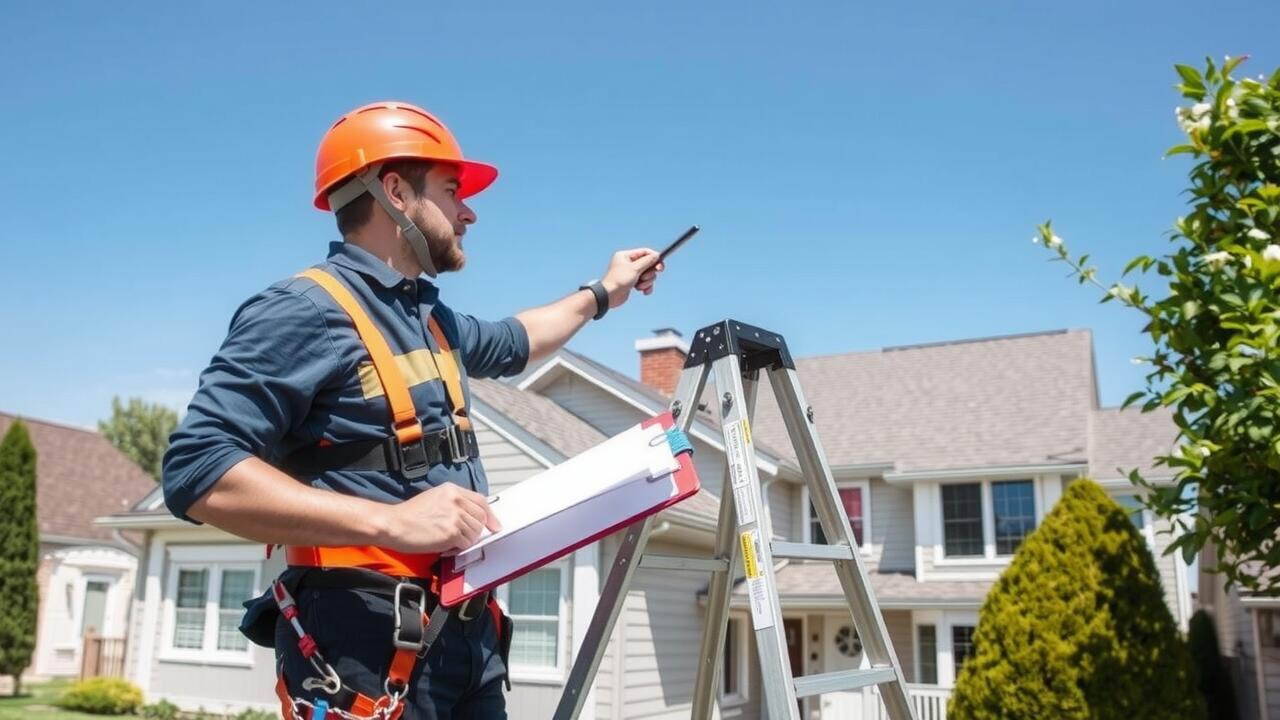
Table Of Contents
Technologies Used in Modern Roof Inspections
Modern roof inspections utilize a variety of advanced technologies to enhance accuracy and efficiency. Drones equipped with high-resolution cameras can provide aerial views of roofs, allowing inspectors to identify potential issues without the need for scaffolding or ladders. Thermal imaging cameras are also becoming increasingly popular. These devices detect temperature variations in roofing materials, helping to uncover hidden leaks or areas of inadequate insulation.
Roof inspection in Deadwood, South Dakota, often incorporates software applications that streamline the inspection process. These applications can generate detailed reports and provide real-time data analysis, ensuring that both clients and inspectors have access to clear information about the condition of the roof. Additionally, 360-degree cameras can create immersive visuals that offer an in-depth look at roof conditions, making it easier to communicate findings to property owners.
Benefits of Advanced Inspection Tools
Advanced inspection tools have revolutionized the way roofs are assessed. Drones and thermal imaging cameras are now commonly used to identify leaks and structural issues that might not be visible to the naked eye. These technologies allow inspectors to capture high-resolution images and detailed data, improving the accuracy of evaluations. Moreover, they significantly reduce the time spent on inspections while enhancing safety by minimizing the need for inspectors to physically access potentially hazardous areas.
Incorporating advanced tools into roof inspection in Deadwood, South Dakota offers numerous advantages for both property owners and inspectors. Detailed reports generated from these inspections provide clear insights into the roof's condition, facilitating informed decision-making for repairs or maintenance. Additionally, the objective nature of data collected from these tools helps to prevent disputes between contractors and homeowners, fostering transparency in the inspection process.
Common Issues Identified During Roof Inspections
Roof inspection in Deadwood, South Dakota often reveals a range of common issues that homeowners should be aware of. One frequent concern is damaged shingles. Weather elements like hail and high winds can lead to cracks or missing pieces, making a roof vulnerable to leaks. Additionally, the presence of moss or algae can indicate moisture buildup, which can deteriorate roofing materials over time.
Another common issue identified is poor ventilation within the attic space. Inadequate airflow can lead to heat and moisture buildup, which may accelerate shingle wear and lead to structural problems. Roof inspectors also check for signs of water infiltration, such as stains on ceilings or walls. These indicators help pinpoint weaknesses that require attention before they result in more extensive damage.
Typical Repairs Following an Inspection
After a comprehensive roof inspection in Deadwood, South Dakota, homeowners often face a range of repairs based on the findings. Common issues include damaged shingles, leaks, and deteriorated flashing that may require replacement or sealing. Addressing these problems promptly helps prevent further structural damage and extends the lifespan of the roof.
In addition to shingle and flashing repairs, other common maintenance tasks may involve gutter cleaning and ensuring proper drainage. Any identified ventilation issues should also be rectified to maintain the roof's integrity. Scheduling these repairs ensures that the roof remains functional and reduces the risk of costly future damages.
Seasonal Considerations for Roof Inspections
Seasonal changes significantly impact the condition of roofs, making it essential to schedule inspections at appropriate times. During winter, snow accumulation and ice can lead to hidden damage, increasing the risk of leaks and structural issues. Spring often reveals the consequences of harsh winter weather, with potential damage from freezing temperatures and thawing cycles. Homeowners should consider these factors when planning a roof inspection in Deadwood, South Dakota.
The late summer and early fall months present another ideal timeframe for inspections. These seasons provide clearer weather conditions, allowing for a thorough evaluation of the roof’s condition. Additionally, scheduling an inspection before the onset of winter can help identify vulnerabilities that need addressing. This proactive approach minimizes risks and ensures that roofs remain in good condition throughout the rigors of changing weather patterns.
Best Times to Schedule an Inspection
Scheduling a roof inspection in Deadwood, South Dakota, is best done in the spring and fall. These seasons provide a clear view of potential damage caused by winter weather and summer storms. Inspections during these times allow homeowners to address any issues before they worsen. Additionally, spring inspections can help identify wear and tear from the harsh winter months, while fall inspections prepare roofs to withstand the colder season ahead.
It is also beneficial to inspect roofs after significant weather events, such as heavy rain or hail. These conditions can lead to leaks, roof membrane damage, or compromised shingles. A prompt inspection can mitigate long-term damage and ensure safety. Homeowners should stay vigilant and consider booking an inspection after major storms to maintain the integrity of their roofs throughout the year.
FAQS
What are the most common technologies used in modern roof inspections?
Modern roof inspections typically utilize drones, infrared thermography, and moisture detection devices. These technologies allow inspectors to assess the condition of the roof more accurately and safely.
What benefits do advanced inspection tools provide?
Advanced inspection tools enhance the accuracy of the assessment, reduce safety risks for inspectors, provide detailed visual data, and help in identifying hard-to-detect issues, leading to more informed repair decisions.
What are some common issues identified during roof inspections?
Common issues found during roof inspections include missing shingles, leaks, damage from pests, roof membrane deterioration, and poor drainage systems.
What typical repairs follow a roof inspection?
Typical repairs following an inspection may include shingle replacement, sealing leaks, repairing flashing, cleaning gutters, and reinforcing or replacing roofing materials.
When is the best time to schedule a roof inspection in Deadwood?
The best times to schedule a roof inspection in Deadwood are typically in the spring and fall. These seasons allow for optimal weather conditions to assess any winter damage and prepare for potential summer storms.
